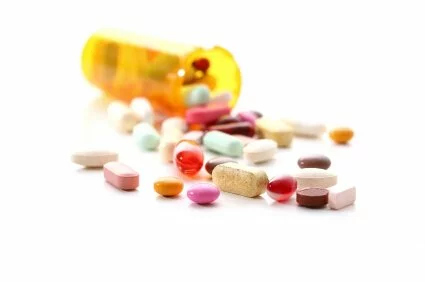- Drug Information
- Drug Review
- Rate This Drug

Benzamycin (Benzoyl peroxide; erythromycin)
Our Benzamycin (Benzoyl peroxide; erythromycin) reviews, ratings, and Benzamycin forum are a detailed collection of knowledge shared between individuals, patients, care-givers, and other interested parties. Please share your story today and connect with others who have similar experiences with the Benzamycin medications.No registration is required, and your identity will remain anonymous.
Average User Rating
0/5 Stars
Based on 0 reviews
Average Drug Rating
- Effectiveness
- Side Effects
- Ease of Use
- Satisfaction
About Drug Rating
- Very Positive
-





- Positive
-





- Neutral
-





- Negative
-





- Very Negative
-





- • 83 % of our Members who reviewed Benzamycin (Benzoyl peroxide; erythromycin) had a positive experience with Benzamycin (Benzoyl peroxide; erythromycin)
- • 5 out of 6 Members who reviewed Benzamycin (Benzoyl peroxide; erythromycin) would recommend Benzamycin (Benzoyl peroxide; erythromycin)
Benzamycin Information
| Brand Name | Benzamycin |
|---|---|
| Product Code | 0066-0510 |
| Company Name |
Dermik Laboratories
|
| Dosage From | KIT |
| total | Array |
Benzamycin (Benzoyl peroxide; erythromycin) ® Topical Gel contains erythromycin [(3R*, 4S*, 5S*, 6R*, 7R*, 9R*, 11R*, 12R*, 13S*, 14R*)-4-[(2,6-Dideoxy-3--methyl-3--methyl-α-L--hexopyranosyl)-oxy]-14-ethyl-7,12,13-trihydroxy-3,5,7,9,11,13-hexamethyl-6-[[3,4,6-trideoxy-3-(dimethylamino)-β-D--hexopyranosyl]oxy]oxacyclotetradecane-2,10-dione]. Erythromycin is a macrolide antibiotic produced from a strain of (formerly ). It is a base and readily forms salts with acids.
Chemically, erythromycin is (CHNO). It has the following structural formula:
Erythromycin has the molecular weight of 733.94. It is a white crystalline powder and has a solubility of approximately 1 mg/mL in water and is soluble in alcohol at 25°C.
Benzamycin (Benzoyl peroxide; erythromycin) Topical Gel also contains benzoyl peroxide for topical use. Benzoyl peroxide is an antibacterial and keratolytic agent.
Chemically, benzoyl peroxide is (CHO). It has the following structural formula:
Benzoyl peroxide has the molecular weight of 242.23. It is a white granular powder and is sparingly soluble in water and alcohol and soluble in acetone, chloroform and ether.
Each gram of Benzamycin (Benzoyl peroxide; erythromycin) Topical Gel contains, as dispensed, 30 mg (3%) of erythromycin and 50 mg (5%) of benzoyl peroxide in a base of purified water USP, Carbomer Homopolymer Type C, alcohol 20%, sodium hydroxide NF, docusate sodium and fragrance.
The exact mechanism by which erythromycin reduces lesions of acne vulgaris is not fully known; however, the effect appears to be due in part to the antibacterial activity of the drug.
Benzoyl peroxide has a keratolytic and desquamative effect which may also contribute to its efficacy. Benzoyl peroxide has been shown to be absorbed by the skin where it is converted to benzoic acid.
Erythromycin acts by inhibition of protein synthesis in susceptible organisms by reversibly binding to 50 ribosomal subunits, thereby inhibiting translocation of aminoacyl transfer-RNA and inhibiting polypeptide synthesis. Antagonism has been demonstrated between erythromycin, lincomycin, chloramphenicol and clindamycin.
Benzoyl peroxide is an antibacterial agent which has been shown to be effective against an anaerobe found in sebaceous follicles and comedones. The antibacterial action of benzoyl peroxide is believed to be due to the release of active oxygen.
Benzamycin (Benzoyl peroxide; erythromycin) Topical Gel is indicated for the topical treatment of acne vulgaris.
Benzamycin (Benzoyl peroxide; erythromycin) Topical Gel is contraindicated in those individuals who have shown hypersensitivity to any of its components.
Treatment with antibacterial agents alters the normal flora of the colon and may permit overgrowth of clostridia. Studies indicate that a toxin produced by is one primary cause of "antibiotic-associated colitis."
After the diagnosis of pseudomembranous colitis has been established, therapeutic measures should be initiated. Mild cases of pseudomembranous colitis usually respond to drug discontinuation alone. In moderate to severe cases, consideration should be given to management with fluids and electrolytes, protein supplementation and treatment with an antibacterial drug clinically effective against colitis.
The use of antibiotic agents may be associated with the overgrowth of nonsusceptible organisms including fungi. If this occurs, discontinue use and take appropriate measures.
Avoid contact with eyes and all mucous membranes.
Data from a study using mice known to be highly susceptible to cancer suggests that benzoyl peroxide acts as a tumor promoter. The clinical significance of this is unknown.
No animal studies have been performed to evaluate the carcinogenic and mutagenic potential or effects on fertility of topical erythromycin. However, long-term (2-year) oral studies in rats with erythromycin ethylsuccinate and erythromycin base did not provide evidence of tumorigenicity. There was no apparent effect on male or female fertility in rats fed erythromycin (base) at levels up to 0.25% of diet.
In controlled clinical trials, the incidence of adverse reactions associated with the use of Benzamycin (Benzoyl peroxide; erythromycin) Topical Gel was approximately 3%. These were dryness and urticarial reaction.
The following additional local adverse reactions have been reported occasionally: irritation of the skin including peeling, itching, burning sensation, erythema, inflammation of the face, eyes and nose, and irritation of the eyes. Skin discoloration, oiliness and tenderness of the skin have also been reported.
Benzamycin (Benzoyl peroxide; erythromycin) Topical Gel should be applied twice daily, morning and evening, or as directed by a physician, to affected areas after the skin is thoroughly washed, rinsed with warm water and gently patted dry.
NDC 0066-0510-46
FOR TOPICAL USE ONLY
DERMIK





